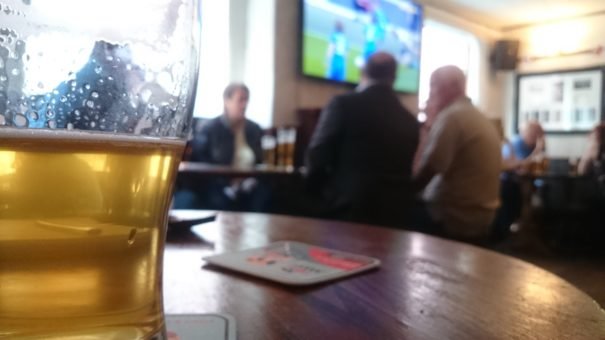
A Slice of Pure Manchester

A Slice of Pure Manchester
Bitter in Manchester
In 1819, sword-bearing cavalry charged a gathering of 80,000 political reform protesters on St. Peter’s Field, Manchester, killing 15 and maiming hundreds more.
The day, now commemorated as the Peterloo Massacre, would spur industrial unionism and inspire the creation of The Guardian newspaper.
Local legend has it that as thousands scattered the streets of Manchester in panic, one of the Peterloo wounded was carried into the Sir Ralph Abercomby pub, and lay dying on the bar.
Just shy of 200 years later, the Sir Ralph Abercromby has seen Manchester grow into the world’s greatest industrial city, survived a direct hit of incendiary Second World War bombs, watched the city fall into post-industrial rot and rise again to its current creative-industry led rebirth. It retains the countryside aura of a time when it sat on the edge of a burgeoning mill town.
At a circular oak table I sip a pumped bitter. The pub fills with Londoners-in-exile, there to watch their capital soccer rivals Tottenham Hotspur and Chelsea in an FA Cup Semifinal on three plasma screens.
The walls are pure Manchester. Profiles of players from local side Manchester United are joined by a graffiti mural of the 2015 Stone Roses resurrection. In 2014, the Manchester United captain, Wayne Rooney, led the players’ Christmas party to the Sir Ralph Abercromby from an upmarket restaurant.
Now a pair of former United greats want to knock the pub down.
Gary Neville, known for his defensive prowess and astute decision-making, has transferred the skills that earned him captaincy of the England national team to the world of real estate. Along with Welsh winger Ryan Giggs, the pair have opened luxury hotels, upmarket nightclubs, and restaurants headed by Michelin-starred chefs.
Their latest project comprises two of the tallest towers in a predominantly low-rise city. Thirty-two stories of luxury apartments, ‘leisure space’ and a five-star hotel will be named after the patron saint of British police, St. Michael, alluding to the demolition of the Bootle Street Police Station next door. The pair have promised to retain the jobs lost from the Sir Ralph Abercromby, and will install the 1950s oak bar in an allocated ‘leisure space.’
But the pub’s locals have rallied on social media, and along with other citizens are voicing their complaints to the developers. Video visualizations show the towers imposing over the 19th-century Manchester Town Hall and surrounding Victorian and Georgian streets, underlining the opposition of Historic England, a British government heritage agency.
Neville announced that he has asked the local government council not to consider the St. Michael’s plans just yet, while they make “refinements to the project,” giving some hope to opponents of the plan.
Manchester recently bulldozed another early 19th-century boozer, the Smith’s Arms. That time, it was in a partnership between Manchester City Council and the Abu Dhabi royal family-owned Manchester City football club, Manchester United’s eternal rivals.
Intrinsically linked to radical politics, industry, and soccer, Manchester’s modern renaissance leaves a bitter taste, at a pub that carries all three in its heart.